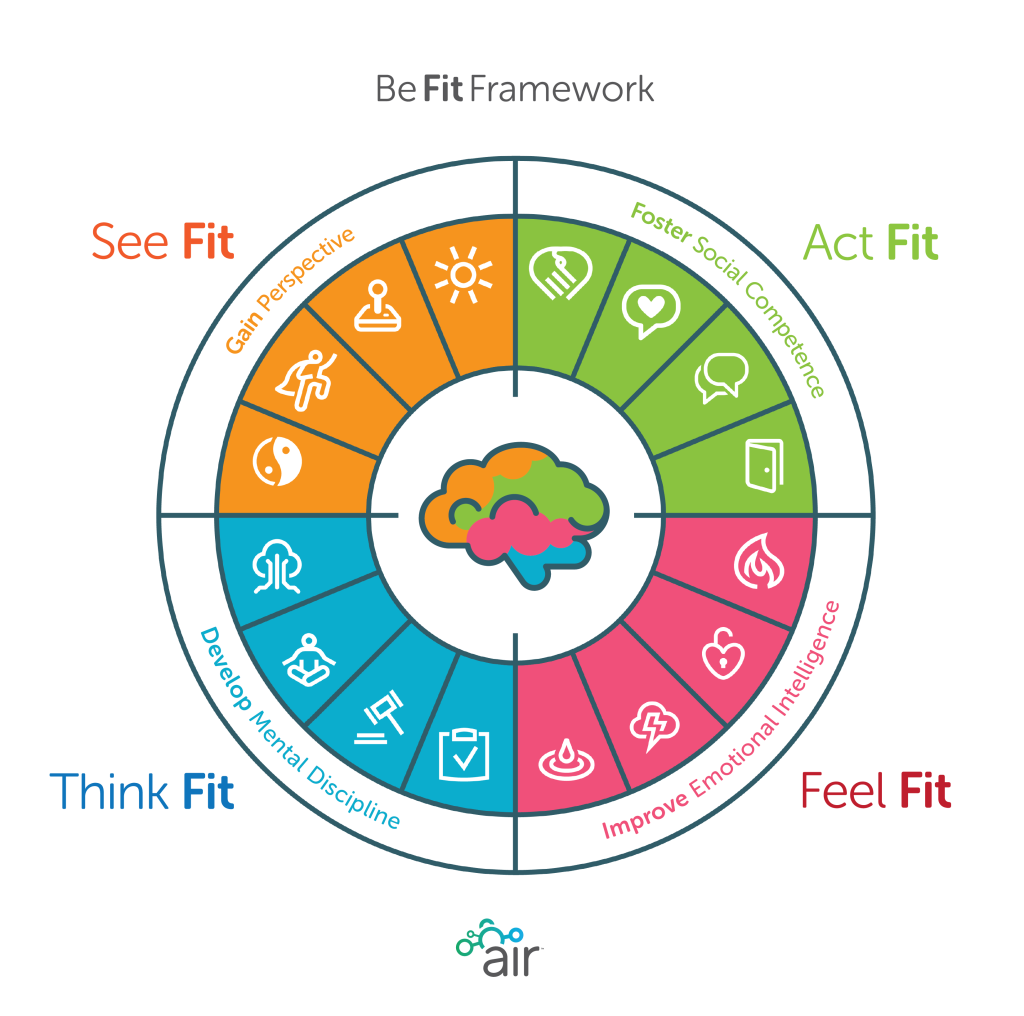The National Standard of Canada for Psychological Health and Safety is one of the most influential frameworks the workplace mental health field has ever produced.
Its 13 Psychosocial Factors outline the conditions that drive safer, healthier, more resilient workplaces.
The challenge?
Most organizations know what the 13 Factors are, but not how to strengthen them in real life.
The Standard gives a map.
Leaders need a method.
At AIR, this is where we come in.

Understanding the 13 Psychosocial Factors: A Gap Between Awareness and Action
Over the last decade, awareness of the National Standard has grown dramatically.
Organizations are measuring:
- Workload
- Culture and civility
- Recognition
- Leadership effectiveness
- Balance
- Psychological support
- Protection and safety
But measurement alone doesn’t change behaviour.
Across industries, we see the same pattern:
Leaders want to communicate clearly, teams want to collaborate well, and everyone wants to stay steady under pressure.
But when stress rises, reactivity takes over.
Intentions don’t translate into actions.
Patterns repeat.
This is the skills gap at the heart of workplace resilience.
Why the 13 Psychosocial Factors Need a Behavioural Method
The 13 Factors identify what matters, but they don’t teach:
- How to respond calmly
- How to communicate clearly
- How to set boundaries
- How to reduce friction
- How to build psychological safety
- How to support people in real moments
These are trainable behaviours, not personality traits.
Resilience grows when people have the skills, support, and environment to stay steady under pressure.
That is the heart of AIR’s work.
Introducing the Be Fit Framework: The Method Behind the 13 Psychosocial Factors

To turn the 13 Factors into practice, AIR developed the Be Fit Framework: a practical, evidence-based way for leaders and teams to strengthen the skills that drive psychological safety.
Be Fit translates resilience into four mental fitness circuits:
See Fit — Perspective
Challenging assumptions, slowing down, understanding context.
Think Fit — Mental Discipline
Organizing priorities, structuring decisions, and creating predictability.
Feel Fit — Emotional Intelligence
Regulating reactions, reading cues, responding with steadiness.
Act Fit — Social Competence + Agency
Speaking up, taking initiative, and participating constructively.
These four circuits directly strengthen each of the 13 Psychosocial Factors.
Behind every factor is a behaviour.
Behind every behaviour is a mental fitness skill.
This is the Resilience Effect.
How Be Fit Strengthens Each of the 13 Psychosocial Factors
Executives and HR leaders often ask:
“Which Be Fit skills support which Psychosocial Factors?”
Here is the high-level translation:
1. Culture & Civility
See Fit + Feel Fit
- Steady responses, understanding context, and respectful interactions.
2. Leadership & Expectations
Think Fit + See Fit
- Clarity, direction, predictable communication.
3. Workload & Balance
Think Fit + Act Fit
- Prioritizing, pacing work, and asking for help early.
4. Recognition & Growth
Feel Fit + Act Fit
- Noticing effort, giving meaningful feedback, and supporting initiative.
5. Engagement & Involvement
Act Fit + Think Fit
- Speaking up constructively, sharing context, and making decisions together.
6. Psychological & Physical Protection
Feel Fit + Think Fit
- Staying steady under pressure, setting boundaries, and reducing risk.
7. Psychological & Social Support
Feel Fit + See Fit
- Listening without judgment, checking in meaningfully, and offering help early.
This is the bridge between the Standard’s framework and real-world behaviour.
From Awareness to Action: Micro-Practices That Build Resilience Daily
Resilience doesn’t improve through information—it improves through repetition.
That’s why AIR focuses on micro-practices, small daily actions that strengthen mental fitness over time:
- The Pause: 3 seconds before responding in a tense moment
- The 60-Second Check-In: alignment on “what’s most important next”
- The 2-Minute Prioritization Reset: identifying top 3 value-moving tasks
- Name the Effort: meaningful recognition that signals impact
- The Inclusion Check: “Is there anyone we haven’t heard from yet?”
- Steady First: grounding yourself before reacting
- Check In, Don’t Fix: “What would be helpful right now?”
These are not “tips.”
They are the reps that build psychological safety.
What the Resilience Effect Looks Like Inside Organizations
When leaders and teams train Be Fit skills, the 13 Psychosocial Factors strengthen naturally:
- Clearer communication
- Lower friction
- Healthier conflict
- Calmer decision-making
- Stronger trust
- Fewer misunderstandings
- Reduced burnout
- Higher engagement
- More sustainable performance
Resilience becomes a capability, not a slogan.
Psychological safety becomes a practice, not a policy.
The National Standard becomes actionable, not theoretical.
This is the Resilience Effect.
The Not Your Standard Series: Turning the 13 Factors Into Trainable Skills
This blog is the foundation for AIR’s Not Your Standard Series—a practical breakdown of how each Psychosocial Factor can be strengthened through:
- Leadership behaviour
- Mental fitness skills
- Repeatable micro-practices
- Team routines
- Everyday interactions
The series is designed for executives, HR leaders, and teams who want to move beyond awareness and into applied resilience.
Because knowing the 13 Factors is one thing.
Strengthening them is another.
Ready to Put the 13 Psychosocial Factors Into Practice?
AIR helps organizations turn psychological safety into a trainable skill set.
We support workplaces through:
- Leadership development
- Mental fitness programs
- Organizational strategy
- Culture and civility training
- Team workshops
- Be Fit skill development
- Workplace assessments
If you’re ready to build a more resilient, human-centred workplace, we’re here to help.
